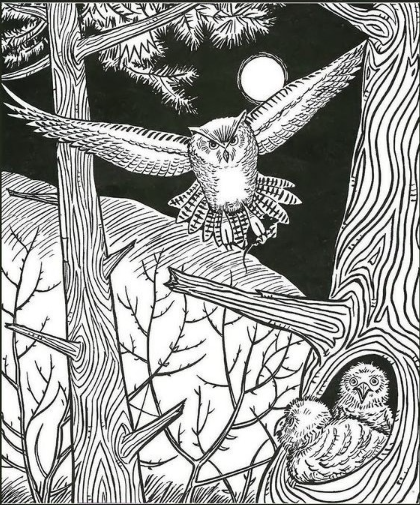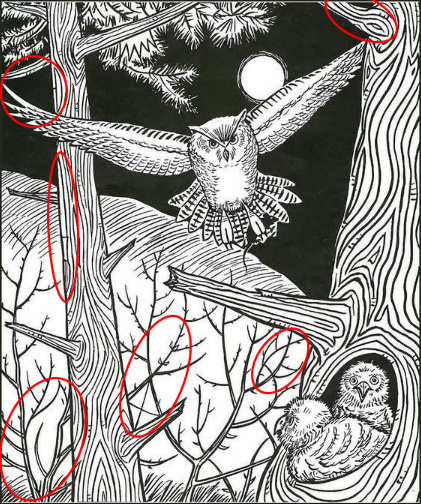Nighttime Guardians: Exploring the Secret Life of Owls
The Nocturnal Mystery of Owls
Have you ever felt a shiver of excitement spotting a silent silhouette gliding past your window at dusk? That’s the enchanting world of owls—nature’s very own night watchmen. As twilight deepens, these mysterious raptors awaken, trading sunlight for moonbeams. Their haunting calls echo through forests, stirring our primal fascination with creatures that master the dark. In this article, we’ll unravel the secrets of owl behavior, anatomy, and conservation, revealing why these feathered guardians deserve our admiration—and protection.

Silent Flight and Stealthy Anatomy
What makes an owl’s flight so eerily silent? The answer lies in ingenious adaptations. Their broad, serrated wing feathers break up turbulence, muffling sound as they slice through the air. A soft fringe along each wing’s edge transforms the roar of air into a whisper, letting owls swoop on prey without warning. Up close, you’ll notice their rounded wings and short tail—perfect for agile turns among dense branches. And peek at their facial discs: those concave feathers funnel sound into asymmetrically placed ears, giving owls pinpoint hearing. It’s like having built-in sonar goggles, guiding them to rustling mice even under a carpet of snow.
Master Hunters: Diet and Hunting Techniques
Have you ever wondered what’s on an owl’s menu? These adaptable predators feast on a dazzling variety: rodents, bats, insects, fish, even other birds. But they don’t just dive in haphazardly. First, an owl perches at a high lookout—like our featured tree cavity scene—listening for tiny scuttles below. With deadly precision, it launches into a silent glide, talons forward, eyes locked on the prize. Some species, like the barn owl, can swallow mice whole, later regurgitating fur and bone pellets that researchers study to learn local wildlife trends. Others, like the great horned owl, tackle larger quarry—rabbits, raccoons, and occasionally unsuspecting porcupines!

Family Life: From Hollow Cavities to Owlets’ First Flight
Step inside the cozy tree hollow and you’ll discover another side of owl life: parenthood. Many owls choose natural cavities or abandoned woodpecker nests to raise their young. In our illustration, two fluffy owlets peek out, eyes wide with curiosity. During incubation, mom or dad stays planted on the clutch—often two to five eggs—while the other hunts. Once hatched, the downy chicks rely fully on parents for warmth and regurgitated meals. Feathered wings develop slowly; fledging can take up to two months. Watching those gangly youngsters take their first flight is like witnessing a miracle: awkward flaps give way to graceful glides as they master the art of stealth.
Owlwatching: Tips for Spotting These Elusive Birds
Eager to observe owls in the wild? Here are a few insider tips:
- Time It Right: Dusk and dawn—when owls shift between roosting and hunting—offer the best chances for sightings.
- Listen First: Carrying binoculars, pause to identify calls: a muffled “hoo,” a hissing screech, or a trilling “ke-wick.” Each species has its signature song.
- Choose the Right Habitat: Forest edges, marshlands, and abandoned barns attract different owl species. Research local hotspots before heading out.
- Stay Quiet and Patient: Approach perches slowly and avoid shining bright lights. A red-filtered headlamp preserves your night vision without startling your target.
- Record Your Sighting: Note time, location, behavior, and call patterns. Citizen-science projects love these data points, helping conservationists track owl populations.
With these strategies, you’ll transform from casual stargazer to dedicated owlwatcher.

Conservation Challenges: Protecting Our Nighttime Allies
While owls have reigned for millions of years, they now face modern threats. Habitat loss—through logging, agriculture, and urban sprawl—robs them of nesting sites and hunting grounds. Rodenticide use in farmlands poisons their prey, leading to secondary poisoning in owls. Collisions with vehicles and power lines add to their struggles. Thankfully, countless organizations and volunteers work tirelessly to reverse these trends:
- Building artificial nesting boxes in woodlands and city parks
- Enforcing pesticide regulations and promoting safe alternatives
- Conducting rescue and rehabilitation for injured birds of prey
- Educating communities about living alongside owls and the importance of dark-sky protection
By supporting these initiatives—through donations, habitat restoration, or simple public awareness—you help ensure owls continue to guard our nights.
Myth, Magic, and Modern Science
Owls have long captivated human imagination. In ancient Greece, the little owl served as Athena’s emblem of wisdom. In Native American lore, they often appear as omens—both protective and foreboding. Today, science demystifies these legends, revealing physiological marvels: ultra-sensitive retinas that detect faint starlight, and ultra-smooth wing surfaces that conquer wind roar. Yet the poetic allure remains: watching an owl launch into moonlit sky still feels like witnessing a silent symphony of nature. Embracing both the mythology and the biology enriches our respect for these remarkable birds.

Conclusion: Celebrating the Nighttime Guardians
From their silent flight and uncanny hearing to devoted parenting in tree hollows, owls embody nature’s blend of wonder and efficiency. As we’ve explored their anatomy, hunting prowess, and conservation challenges, one thing remains clear: these feathered sentinels deserve our admiration and protection. So next time you hear a distant “hoo-hoo” under the full moon, pause for a moment. Remember the intricate adaptations that allow owls to reign supreme in darkness, and consider how your actions—big or small—can help safeguard their future. In celebrating owls, we celebrate the magic woven into every night sky.





